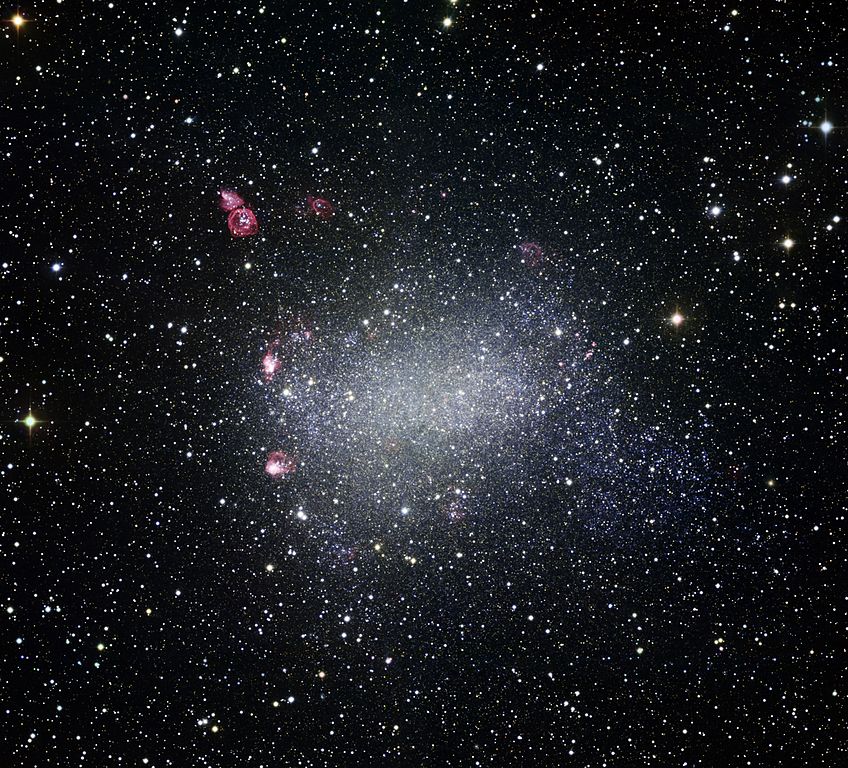
Up until the early 1920s, astronomers questioned one of the fundamental aspects of astronomy that we take for granted today: Is the Milky Way the entire universe or just a small part of it? By the start of the 20th century, astrophotography techniques were beginning to advance, allowing astronomers to gain clearer and deeper images of the cosmos. Many objects visible on grainy photographic plates were dubbed “spiral nebulae” due to the pinwheel-like structure observed within these cloudy structures. Some astronomers, such as Harlow Shapley, believed that their observations suggested that the Milky Way encompassed the entire universe including these spiral nebulae, while others, such as Heber Curtis, believed that the spiral nebulae were actually tremendously large objects outside of the Milky Way, each an “island” in a vast universe. On April 26, 1920, 100 years ago yesterday, the “Great Debate” concerning this very subject was held by Shapley and Curtis at the Smithsonian Museum of Natural History.
Edwin Hubble, namesake of the telescope that celebrated the 30th anniversary of its launch last Friday, made observations of the Andromeda Nebulae and M33 in 1923. Within these bright spiral nebulae Hubble found members of a special type of stellar class known as cepheid variables. These stars, named for the prototypical star delta Cephei, are classified as variable stars, for they readily change in brightness due to physical pulsations. As they swell and shrink, their luminosity changes in a regular pattern. A little more than a decade before Hubble began this search, Henrietta Swan Leavitt had discovered that there was a relationship between the variability period and the star’s luminosity for this type of variable star — the longer the pulsation period, the more luminous the star actually was. This would allow astronomers like Hubble to determine the true luminosity of a distant cepheid variable by merely observing its pulsation period. Once the true luminosity was determined and the apparent brightness of the star in our sky was measured, the two values together would yield the star’s distance. Hubble initially found that the cepheid variables in the Andromeda Nebula and M33 were much farther than even the most generous estimates for the size of the Milky Way; however, he would simply state his findings without stating the obvious conclusion. He continued his observations for a couple of more years, refining his results, before making any bold conclusions.
Pictured above, another object for which Edwin Hubble determined to be a neighbor of the Milky Way Galaxy is Barnard’s Galaxy. Discovered in 1884 by Edward Emerson Barnard using Vanderbilt University’s six-inch refracting telescope at the university’s original observatory, Barnard’s Galaxy (NGC 6822) is a dwarf irregular galaxy located approximately 1.6 million light-years away in the constellation Sagittarius. Edwin Hubble used the 100-inch Hooker Telescope to locate nearly a dozen cepheid variables within NGC 6822 and determined it to be about 250,000 parsecs distant, well outside of the Milky Way’s borders. In his 1925 paper, Hubble wrote that NGC 6822 was “the first object definitely assigned to a region outside the galactic system.”
<- Previous April 27, 2020 Next ->
Tucked up among the wooded hilltops of northern Brentwood, Vanderbilt Dyer Observatory is considered by many to be a hidden treasure of the area. Visitors to our satellite campus not only learn about some of the cutting-edge discoveries and science in astronomy but they also get a dose of nature, history, and many other things while here. Over the years, we at Dyer Observatory have made the preservation of our facility and grounds a key mission. Preservation not only entails things such as maintaining our telescopes — it also includes keeping a record of days passed. Since 1953, we have amassed a number of interesting images, pieces of equipment, and ephemera. Every day tends to bring new surprises. In continuing our tradition of public education and outreach, Stellar Finds regularly provides an image and description of the diverse paraphernalia associated with Vanderbilt Dyer Observatory and the history of astronomy at Vanderbilt University.